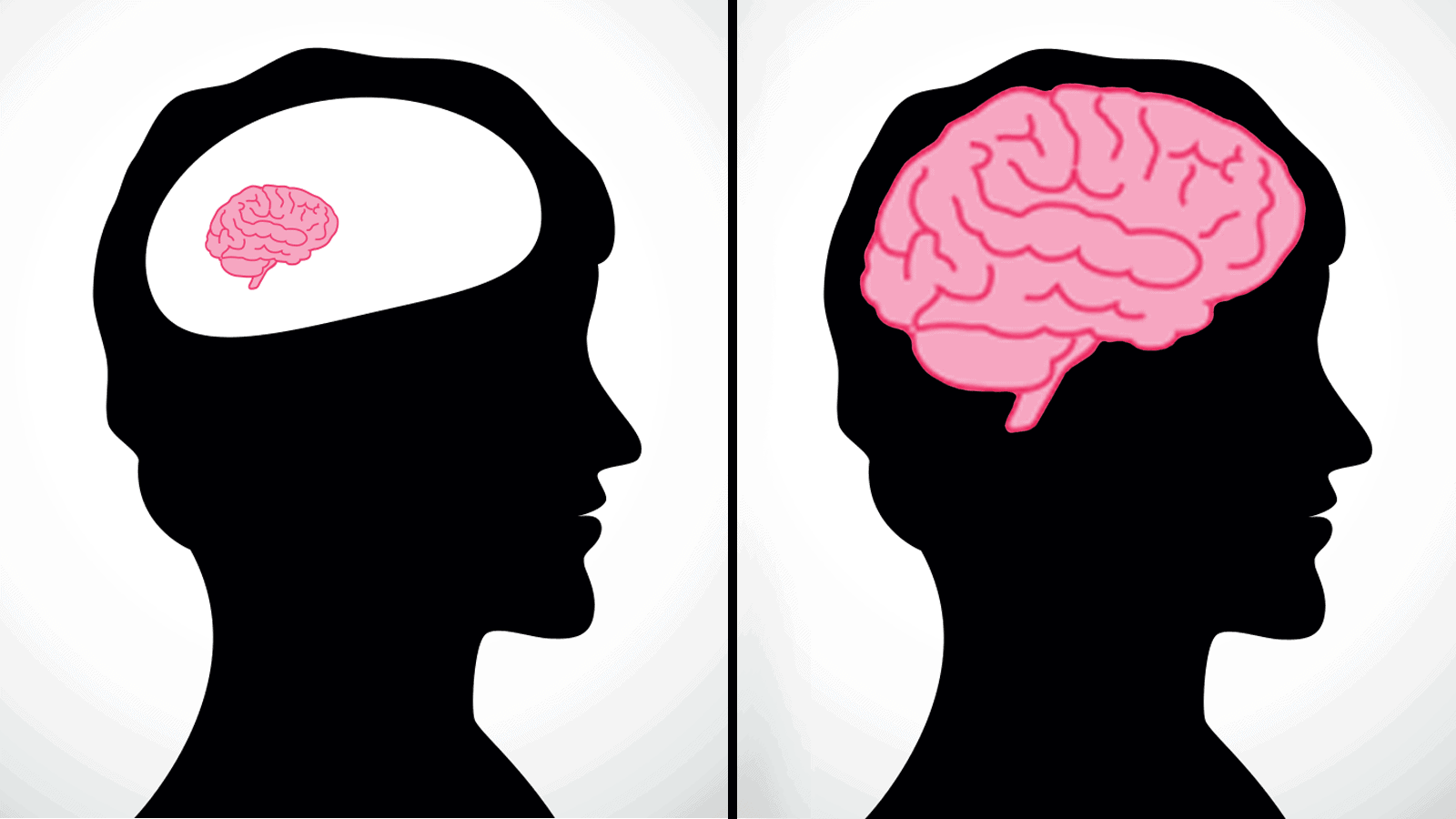Have you ever taken an intelligence test? These exams, often completed with pen and paper, cost a small fortune to take, and take a long time to complete. But what if I told you it may not stay that way for long?
That’s right – recent science has allowed researchers to create a special test that will be easily accessible at no cost, with good results and a short completion time. Researchers recently revealed a free intelligence test that only takes 10 minutes!
Researchers Reveal Free Intelligence Test That Only Takes 10 Minutes
1. Previous intelligence tests
Plenty of intelligence tests have been created over the years, with quite a few methods of cognitive testing becoming available for tablet-based takers.
However, nonverbal reasoning and logic abilities through problems of a matrix variety are less commonly adapted to mobile and tablet platforms. Even fewer allow for repetitive tests, and even fewer than that have been validated.
The previous standardized test used to determine reasoning ability is Raven’s Advanced Progressive Matrices, known today as APM. Originally created by John Carlyle Raven, a British psychologist, back in 1938, the test originally held five sets of multiple-choice questions. Each set contained twelve matrices.
Today, the APM features five sets of thirty-six matrices, significantly increasing test criteria. Instead of multiple choice questions, the APM has tests involving the matching of patterns and does not use any sentences or words.
While the APM has served as an accepted and widely used intelligence test for many years, especially for students in undergraduate programs, it has some downsides. The test does not change or present new questions to repeat takers.
- In addition, this test takes up to an hour to complete.
- Plus, the test kit and corresponding answer sheets can cost upwards of a few hundred dollars.
- As more people have taken the test, this price has only increased.
There is, of course, the famed IQ test – but this test isn’t quite in the same frame as the type the APM is used for. It has also been disproven a fair amount of times – something we’ll dive into later in this article.
2. New intelligence test revealed
To improve on the APM, psychologists from the University of California in Riverside and the University of California in Irvine teamed up to create a test that works just as well. They wanted something more convenient for takers, allowing for a more positive experience.
This test only takes 10 minutes to complete and costs nothing to take. The UCMRT, short for the University of California Matrix Reasoning Task, measures fluid intelligence and tests one’s problem-solving skills. The test can also run on virtually all mobile devices easily.
Additionally, researchers created three different versions of the test that provide the same benefits. This means someone could take the test three times and have accurate results returned. Individuals could only take previous testing methods one single time.
The UCMRT tests only fluid intelligence. It provides an accurate test depicting someone’s intellect, reasoning skills, and problem-solving ability. It supposedly separates high-performing individuals and predicts proficiency in academics.
3. What is fluid intelligence?
So, we know that the UCMRT only measures fluid intelligence. But exactly is that? What other kinds of intelligence exist?
Let’s start by talking about fluid intelligence. This is the intelligence required for an individual to use good problem-solving skills. Someone with high fluid intelligence can think logically and rationally on their feet in new, unfamiliar circumstances using only the information they have available in the moment.
This means that someone with fluid intelligence can make intelligent decisions without pre-existing knowledge of any kind. They can assess a new situation quickly, even when unprepared, and choose the best options.
Naturally, no one can completely remove all traces of pre-existing knowledge. As one ages, they will likely also have more knowledge to gather from. However, many consider fluid intelligence a more innate form of smarts than other types of intelligence.
On the other hand, crystallized intelligence stands as the “opposite” of fluid intelligence. It represents someone’s ability to apply learned knowledge to situations for the best possible outcomes. An example would be a standardized school test, where students test on what they have learned.
Other kinds of intelligence fall in different categories. Few tests exist for most of these forms of intelligence. Howard Gardener, a developmental psychologist, developed the following nine types of intelligence:
a) Bodily-kinesthetic intelligence
This refers to the ability to use physical skills to use and manipulate objects, often with hand-eye and mind-body coordination. Dancers, craftsmen, athletes, and surgeons need this intelligence.
b) Existential intelligence
This includes understanding and pondering questions about the human condition, experience, and existence. Philosophers often have high levels of existential intelligence.
c) Interpersonal intelligence
This intelligence allows people to be good at interacting with other people. Those with these smarts have high levels of empathy, read body language and moods, and have sensitivity toward others. Teachers, actors, and social workers would need this.
d) Intra-personal intelligence
This allows individuals to understand and reflect on themselves, their feelings, and their emotions, leading to better future planning. Philosophers would also have high levels of this intelligence and religious and spiritual leaders.
e) Linguistic intelligence
This allows people to understand the complexities of language and its uses. Many individuals have high levels of this, including writers of all kinds, speakers, and even those who excel at word puzzles.
f) Logical-mathematical intelligence
People with this intelligence have a good grasp of math and calculations. They consider different hypotheses and inferences effectively and engage in abstract thought and deductive reasoning. Scientists, detectives, and mathematicians have high levels of this intelligence.
g) Musical intelligence
As you may have guessed, this intelligence allows people to understand music. They can create music and have a good sense of rhythm, pitch, and tone. Musicians and others in professional music fields likely boast high levels of this intelligence.
h) Naturalist intelligence
This intelligence lets people understand and differentiate living and natural things, from animals and plants to rocks and clouds. Hunters, farmers, botanists, and even chefs may have high levels of this intelligence.
i) Spatial intelligence
This kind of intelligence allows individuals to think in three-dimensional ways. They may be good at graphics or artistry, or be capable of spatial reasoning and have vivid mental imagery.
4. Research methods and test contents
The UCMRT contains two problems of a two-relation variety, fifteen problems of a three-relation variety, and six problems of a logic-based variety. After creating this test, further research involved recruiting undergraduate students into the study.
A total of 713 participants participated in this study, which simply involved completing the test. Of these participants, 230 had taken the APM intelligence test as well. The results following this were positive. They showed that the UCMRT’s results for each participant had a strong correlation with a variety of other exams and assessment methods, including:
- College GPA
- Admission test scores
- Math exams
- APM
Compared to the APM, the UCMRT proved that the newer, shorter form of testing proved just as accurate as the APM – with plenty of additional positive benefits.
Researchers hope to diversify the UCMRT further so that those of different ages, knowledge levels, and abilities can take it. According to lead team members, the California State University, located in San Bernardino, is working with them to move toward this more diversified form of intelligence testing.
5. Taking the test
The UCMRT is a free intelligence test self-admissible, meaning it can be taken from any location and doesn’t require a proctor. It can be taken from most devices connected to the internet. Thanks to log files, the total number of problems correctly completed, wrongly completed, or left uncompleted are easily available.
This intelligence test, not done with pen and paper, also allows better insight into an individual’s unique methods and patterns when solving problems. Additionally, it measures reaction time.
For now, only scientists can access this test. If you are a scientist who would like to use the test, reach out to the lead researcher at [email protected].
6. Can it truly reflect intelligence?
There have been many intelligence tests over the years. But can they truly give an accurate value to your intelligence? In short, no, they cannot. However, they may have some merit.
The IQ test, arguably the world’s most famous test of intelligence, measures a mix of crystallized and fluid intelligence. It calculates the levels of intelligence of someone in a more comprehensive way.
But psychologists have criticized this test for years. Recently, in 2012, a study published in a journal called Neuron found that these tests may have less credibility than we believe. This study involved an impressive 44,600 participants, who all performed a series of difficult tasks – 12.
Results showed that not a single test could explain each participant’s results. Three completely different components were required to measure this intelligence at all. As such, we can conclude that no single test can accurately chronicle someone’s intellect.
What does this mean? It means that some people are better at certain things than others. As human beings, we all have intelligence in different, unique ways. No single test can define you. Therefore, stay calm and practice positive thinking even if you receive negative results from them.
Final Thoughts On Intelligence Tests
While big companies typically administer intelligence tests for high fees, the UCMRT is free, coming as a breath of fresh air to the academic world. It will likely be very frequently taken when it becomes available to the public.
So, should you take the UCMRT? It’s completely up to you, and there’s nothing wrong with the test’s findings. Its research is thorough. Plenty of thought has also been put into it, and it’s proven accurate in the circles it uses. But if you take it, remember that your worth – and even your intelligence – isn’t defined by the UCMRT. No intelligence test can accurately define you because your worth involves much more.


















 Community
Community

